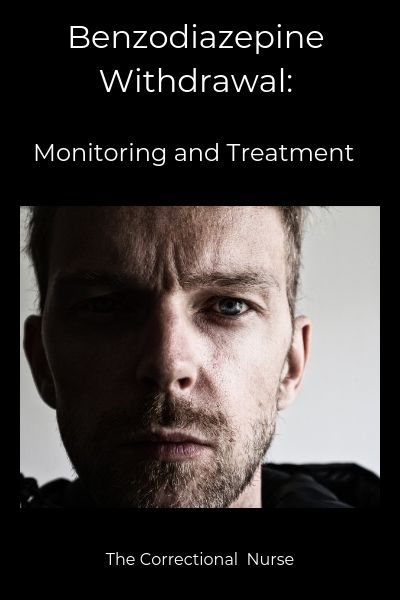Benzodiazepines are frequently prescribed for anxiety and sleep disorders. They are also popular for self-medicating purposes. They are rarely abused alone, and are often combined with alcohol or opiates. Those who abuse cocaine or methamphetamines may use benzodiazepines to ‘level off’ a high. Once identified, successful benzodiazepine withdrawal requires monitoring and management.

Signs of Impending Problems
The symptoms and duration of withdrawal can be hard to determine, as they are based on type (short-acting vs. long-acting), length of use, and underlying psychopathology. Symptoms can be as mild as some irritability and insomnia, and can develop into more as intense symptoms like seizures, panic attacks, and hallucinations. General body discomforts such as bloating, muscle aches, and restlessness are also common. The Federal Bureau of Prisons Detoxification Guidelines provide a helpful staging guide:
- Early Withdrawal: Increased pulse and blood pressure, anxiety, panic attacks, restlessness, and gastrointestinal upset.
- Mid Withdrawal: Progressing to include tremor, fever, diaphoresis, insomnia, anorexia, and diarrhea.
- Late Withdrawal: If left untreated, a delirium may develop with hallucinations, changes in consciousness, profound agitation, autonomic instability, seizures, and death.
Monitoring and Protocols
Unfortunately, an extensively evaluated monitoring scale does not yet exist for benzodiazepine withdrawal. A scale modeled after the well-validated CIWA-Ar (for alcohol withdrawal) is currently being tested for widespread use. The CIWA-B is a 22-item instrument that monitors type and severity of benzodiazepine withdrawal symptoms such as irritability, fatigue, appetite, and sleeplessness. Objective assessment of sweating, restlessness (pacing), and tremor are also documented. A tally of points based on responses and observation can be used to determine treatment.
Another withdrawal monitoring option with some validation is the Benzodiazepine Withdrawal Symptom Questionnaire (BWSQ). This tool is a 20-item self-report questionnaire that does not include scoring categories for level of treatment.
Because tools like the CIWA-B and BWSQ have had little validation as yet, the Federal Bureau of Prisons (FBOP) recommends general evaluation of symptoms based on the withdrawal criteria above with vital signs at least every 8 hours for the first three days of monitoring and treatment. Some facilities also use the CiWA-AR scale to monitor for both alcohol and Benzodiazepine withdrawal, although the FBOP guideline includes the directive not to do this.
It is vitally important that you understand and follow your facility’s policies and protocols surrounding detoxification.
Treatment PHARMACOLOGy
A tapered schedule of long-acting benzodiazepines to ease withdrawal is advocated. Under medical supervision, detoxification can be accomplished using chlordiazepoxide, lorazepam, diazepam, and/or oxazepam.
Unfortunately, benzodiazepine withdrawal is complicated by symptom reemergence and rebound. The anxiety and insomnia that prompted the original drug use can return with greater intensity. Withdrawal can take many weeks or months to successfully accomplish and requires continued monitoring and attention.
How do you deal with benzodiazepine withdrawal in your setting? Share your experience in the comments section of this post.
Leave a Reply